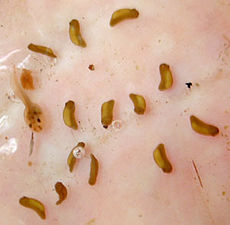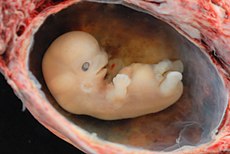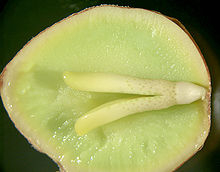Embryo



An embryo is the earliest stage in the development of a fertilised egg (the zygote). It is the term used for any animal or plant,[1] from the first cell division until birth, or hatching, or germination in plants.
In humans, it is called an embryo until about eight weeks after fertilization, and from then until birth it is called a foetus (US: fetus).
The development of the embryo is called embryogenesis, and the study of embryos is called embryology.[2] The development of an embryo passes through various stages: the blastula, a hollow ball of cells; the gastrula, migration of cells; morphogenesis; tissue differentiation, and so on.
In organisms that reproduce sexually, once a sperm fertilizes an egg cell, the result is a cell called the zygote, which has DNA from each of the two parents. In plants, animals, and some protists, the zygote divides by mitosis to produce an embryo.
Related pages
[change | change source]References
[change | change source]- ↑ technically, any multicellular diploid eukaryote
- ↑ "Embryo (Human and Animal)". Encyclopædia Britannica. 10 May 2018.
